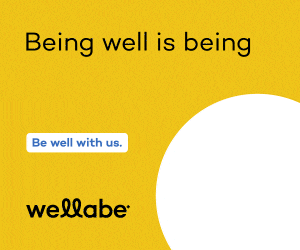Purchaser must perceive difference and value

Last week I detailed a sales model I named (actually trademarked) “Intelligent Engagement.” The model deals with using friendly, emotional, intelligent and sustained engagement as a path to sales success by creating a buying atmosphere.
It rests on my sales philosophy that “people don’t like to be sold, but they love to buy.” And it incorporates the engagement elements that will differentiate you from your competitors. It deals with every element that converts your selling to their buying — with the exception of manipulation.
Intelligent engagement dumps traditional selling skills and focuses on the most powerful element of selling: why people buy. Also called “buying motives,” these emotions trigger a response from the purchaser. With the right preparation and execution, you can trigger a “yes.”
Note well: The buyer will buy for three primary reasons beyond “need.” That’s the second part of the secret.
The first part of the secret is engagement. The second centers on the word “perceive.” Perceived difference — and perceived value.
Here are the three primary elements that create a “buy”:
1. How you engage me.
2. How I perceive the difference between you and others.
3. How my perceived value of doing business with you relates to me.
I will buy if . . .
• You engage me.
• I perceive a difference between you and the others who sell what you sell.
• I perceive a value that benefits me beyond your price.
If I perceive no difference in you, if I perceive no value as the purchaser, if you have not engaged me in a memorable way, then ALL THAT’S LEFT IS THE PRICE. And even if you win on price, you lose on profit.
How powerful is your engagement? How successful are you at creating a perceived difference between you and your competition? What are you offering that benefits the buyer? How does the buyer perceive value? How are you creating those elements? And how are you implementing them during the sales interaction?
Well, I have the formula. But I deliver it with some words of caution. Read it several times until it sinks in. The key to this formula is the “why.” Why each element is there, why it’s important, and why it works. Ask yourself if you understand each element and how it fits into your sales process. Then ask yourself, “How do I use it?”
This sales model is the short version of the formula. It ensures that your prospective purchaser perceives a difference in you and will get real value from you.
P — Personalized Preparation. How you get ready for the prospect.
E — Engaging Questions. A list of questions that make the prospect think and respond in terms of you.
R — Rapport, Respect, Real World, Relaxed. These four key elements are what you must gain (rapport and respect) and be (real world, relaxed).
C — Creative Ideas. For the customer. They include profit, productivity and other values that are important to the customer. We’re talking ideas, not brochures.
E — Excellent Communication and Presentation Skills. The ability to get your message across in a clear, concise way.
I — Incentive to Buy Now—and to Buy From You. You create a sense of urgency through the desire to gain or (more powerfully) through the fear of loss. Create this urgency and you eliminate competition.
V — Value Perception; Risk Reduction. The greater the value you present (how they win, how they produce or how they profit), the lower the risk and the faster they will buy. The biggest barrier in sales is not price. It’s the buyer’s unspoken risk. It’s fearing the consequences of saying yes or doing business with you.
E — Enthusiasm, Effort, Attitude, Belief and Passion. You need these internal elements to rise above the others. If you don’t possess these characteristics, don’t bother with the other elements. These are your glue.
D — Dedication to Lifelong Learning. Be a student. Study and practice every day. Become the master — even when you think you know it all.
As you can see, these elements spell the word “perceived.” I hate acronyms, too, but this one really fits and it drives home “perception,” the secret of unlocking the sale.
The customer’s perception is your reality, not the other way around. The sale, or rather the “buy,” hinges on the customer’s perception of you, your product, your company, your reputation, your value and your quality.
If it sounds like work, it is. This process isn’t for everyone — just salespeople who want to make solid business friendships, eliminate price as a barrier, double their sales, land referrals, get testimonials and establish long-term relationships with all their customers.
If you want both parts of this model, go to www.gitomer.com and enter the word INTELLIGENT in the GitBit box.
Jeffrey Gitomer can be reached by phone at (704) 333-1112 or by e-mail at salesman@gitomer.com.







